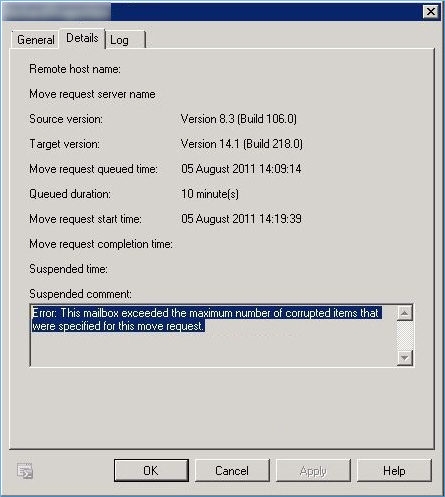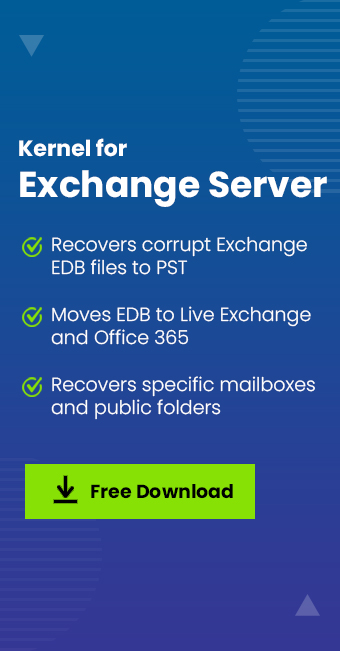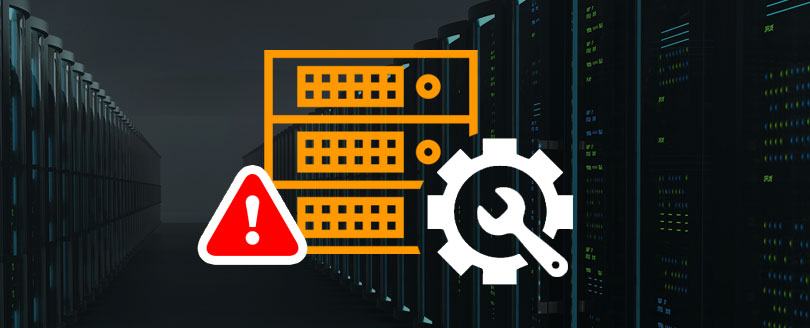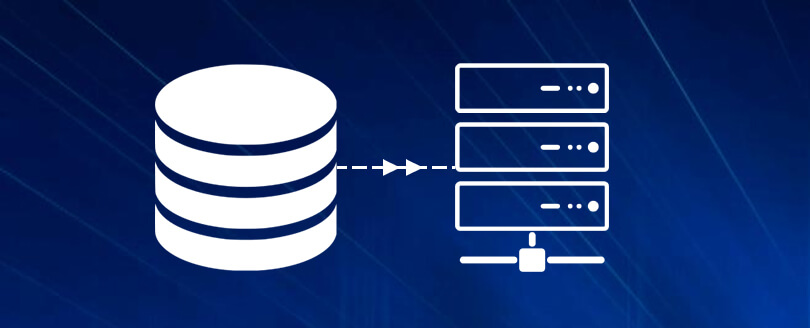Read time 3 minutes
Migrating or upgrading your Exchange mailboxes is a complicated task. Any minor issue can halt the process in the middle, leaving you with confusing errors. One such error that Exchange Server administrators often face when updating or moving data between Exchange Servers is “mailbox exceeded the maximum number of corrupted items”.
I have dealt with this issue a few times in my organization. When our Exchange Administrator migrated the Exchange Server 2007 SP2 to Exchange Server 2010 with more than 3000 mailboxes, the initial process completed without issue. The transition to new CAS arrays and HUB transport servers and the redirection of the client access and mail flow worked fine. But when the migration of mailbox started, the following error occurred:

This error will stop the migration process, and you may no longer be able to transfer the mailboxes. The cause behind the error is that the user mailbox may have more corrupt items than Exchange can handle. The Exchange can be configured to skip the migration when the number of corrupt items in a user mailbox exceeds the specified number. To help you fix the issue, we will discuss all the possible methods available. In addition, I will also introduce an advanced Exchange Server recovery tool that will be very useful in this condition.
Reasons for the “Mailbox Exceeded the Maximum Number of Corrupted Items” Error
The most common scenarios that can lead to the issue are:
- Bad Items Limit: As we discussed above, there is a limit to how many corrupt items the migration can support. Crossing this limit will cause the migration to stop abruptly.
- EDB File Corruption: The EDB file or the mailbox inside it may be corrupted. Such situations are common after a hardware failure, improper shutdowns, virus attacks, etc.
- Migration-Related Issues: An incorrect migration configuration by you or an issue with the migration tool itself may be the culprit.
- Antivirus or Third-Party Software: Sometimes, antivirus or other security software can interfere with the migration process by marking some safe data items as corrupt.
- Inconsistent Data: In some rare cases, the data you are sending might be inconsistent or contain unrecognizable characters, which the migration process may interpret as damaged items.
Solution to Fix “This mailbox exceeded the maximum number of corrupted items” Error
If you have encountered a similar message, then you can follow the solutions mentioned below:
Method 1: Increase the limit of corrupted items allowed
Let’s suppose that the mailbox move request has a bad item limit set to 10. So, if the number of corrupt items is more than 10, then the move request will stop and give the error mentioned above. There is a simple set of commands, which you can run as an Administrator in the Exchange Management Shell to increase the bad item limit. To do so, run the following command:
This command will bring out the details of the move request created for the mailbox named test mailbox.
This command will increase the bad item limit to 10.
The move request will resume the migration.
You can also choose to run a new move request with the help of command:
After completing these changes, it is quite probable that you will not need to face the same error again. If the error persists, then you can go for another method.
Method 2: Remove or Fix Corrupt Items
If you are getting the “mailbox exceeded the maximum number of corrupted items“ error after increasing the bad item limit. Then, you must repair EDB files or mailboxes with corrupt data. To fix the damaged data, use the Exchange Management Shell and run the following command:
Note: Replace “user_mailbox” with the actual user email id.
This command will scan your specified mailbox for corruption, and if it finds anything, it will fix it automatically. To check the status of the above command, execute the following command:
If you want to check and remove corruption from the entire EDB file. Then, use the inbuilt ESEUTIL utility. It is used to fix minor corruption in the Exchange database. You can find it at:
Repair Corrupt Exchange Database with an Advanced Tool
If you cannot remove the “this mailbox exceeded the maximum number of corrupted items” error using the manual methods, then it is wise to use a professional tool like Kernel for Exchange Server. This advanced Exchange EDB recovery tool is embedded with robust algorithms that allow you to quickly find and repair corruption in EDB files with guaranteed results.
Some prominent features of the tool are:
- Fast and accurate recovery of all corrupt EDB files of any size.
- Allows direct migration of EDB to Exchange Server (On-Premises & Online)
- Built-in filters for complete or selective email migration.
- Recover deleted or lost emails with original metadata.
- Preview mailbox data after repair with all emails, attachments, contacts, etc.
Conclusion
Use the methods above to resolve “this mailbox exceeded the maximum number of corrupted items” error. If increasing the bad item limit does not help, then try repairing the mailboxes with the Exchange Management Shell. The repair process will be more effective if you use the recommended Kernel for Exchange Server software. It permits you to repair and directly migrate EDB to Live Exchange & Office 365 with 100% error-free process.
Frequently Asked Questions
Ans. The issue mainly arises when the mailbox you are migrating has more corrupt items than you have defined in the migration configuration. Other reasons can be a corrupt EDB file, interference of your anti-malware program, etc.
Ans. To remove bad items, you have to repair the mailboxes or the complete EDB file. For minor corruption, use New-MailboxRepairRequest-Mailbox or the Eseutil utility. But the manual methods may cause data loss. To remove corruption without losing any data, you have to use a professional Exchange data recovery tool.
Ans. If skipping a certain number of items does not worry you, then it is fine. But if you want a error-free migration, then instead of increasing the BadItemLimit, use a repair tool to fix the corruption.








